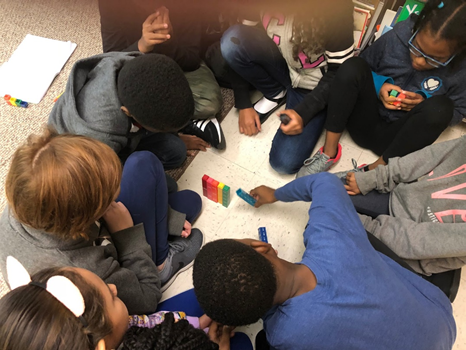|
Heartfelt Thank You
Since this will be my last piece written for this newsletter, I thought it was fitting to thank some folks. Let me begin by extending a thank you to Grace Chen for recommending me and thanks to Nate Goza for taking a chance on a newbie. Thank you to Casey McCormick for the reminders to post and to fellow authors for allowing me to sometimes claim a topic in advance because of my insatiable passion.
I am a teacher, and as such, I see my job as one that brings out the best in my students, by giving each exactly what they need. Often, that has meant providing conditions of being valued, seen, and heard. As a contributing writer this year, my desire was to promote and elevate mathematicians of color. I wanted this newsletter to reflect my Twitter timeline, because the few times I’d read it, it hadn’t. I wanted people to see what I see – that we weren’t an afterthought. That we have always been here, have always belonged, and have always been worthy of respect.
(Photo: Marian Dingle)

Again, I thank Nate for being ok with that from the beginning. Sometimes, it was as easy as selecting a few choice tweets of the week. Other times it involved nudging someone to blog about what they already do, sometimes for the first time. Because that is really all it takes – for someone to give you permission to be yourself, to acknowledge that you belong. That belonging is not dependent on being part of the echo chamber; belonging can also mean being truth-tellers, unafraid to say that the emperor has no clothes. I thank them for trusting me to showcase their talent.
Their pieces were fantastic, just as I knew they would be. One of my early mentors told me that educators are identifiers of talent. That has stuck with me. I didn’t need to see past writing samples or see them teach to know these brilliant people had a valuable message to share. And, they certainly didn’t require coaching or mentoring.
Hopefully, you will join me in seeing the following mathematicians of color as the norm:
Lauren Baucom Makeda Brome
Theodore Chao Kristopher Childs
Rochelle Gutiérrez Naomi Jessup
Shelly Jones Hema Khodai
Tyrone Martinez-Black Cristina Paul
Christopher Emdin Jenise Sexton
Esther Song Monica Tienda
José Vilson Bobson Wong
The above people have been mentioned by me this year, but by no means are these the only voices of mathematicians of color to whom we should listen. They know that content expertise can and should also be married with culturally responsive pedagogy.
I happily pass on the baton to other writers who will continue this work next year. As much as I have enjoyed contributing, it is time for me to put more attention toward other creative pursuits. I end this post with the wish that the voices featured in newsletters be truly representative of the vast talent that exists. My most sincere thanks go to readers who engaged in the ongoing conversations.
Written by Marian Dingle
|